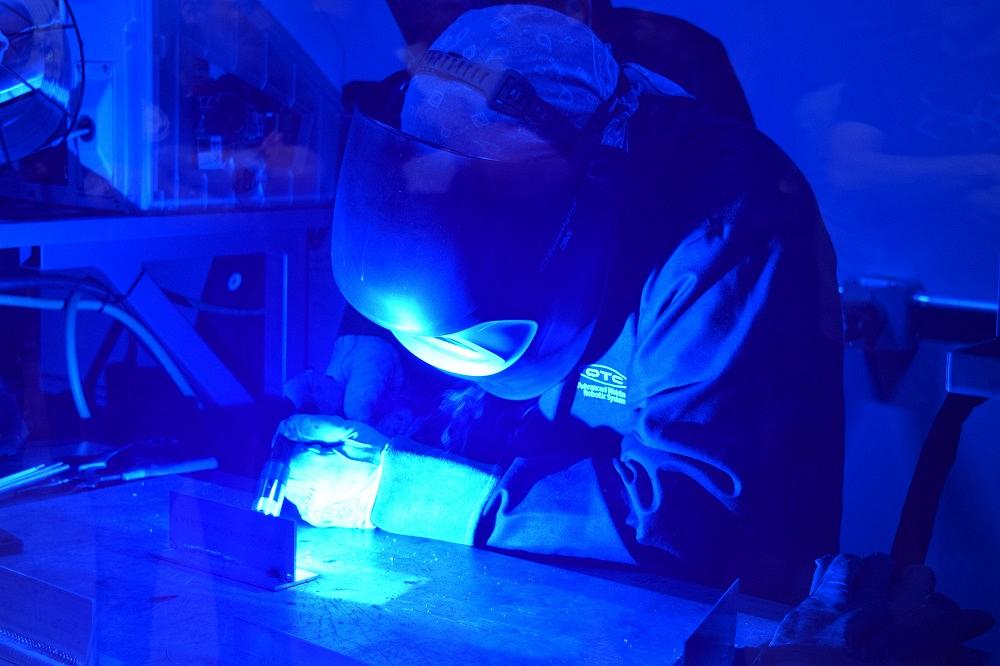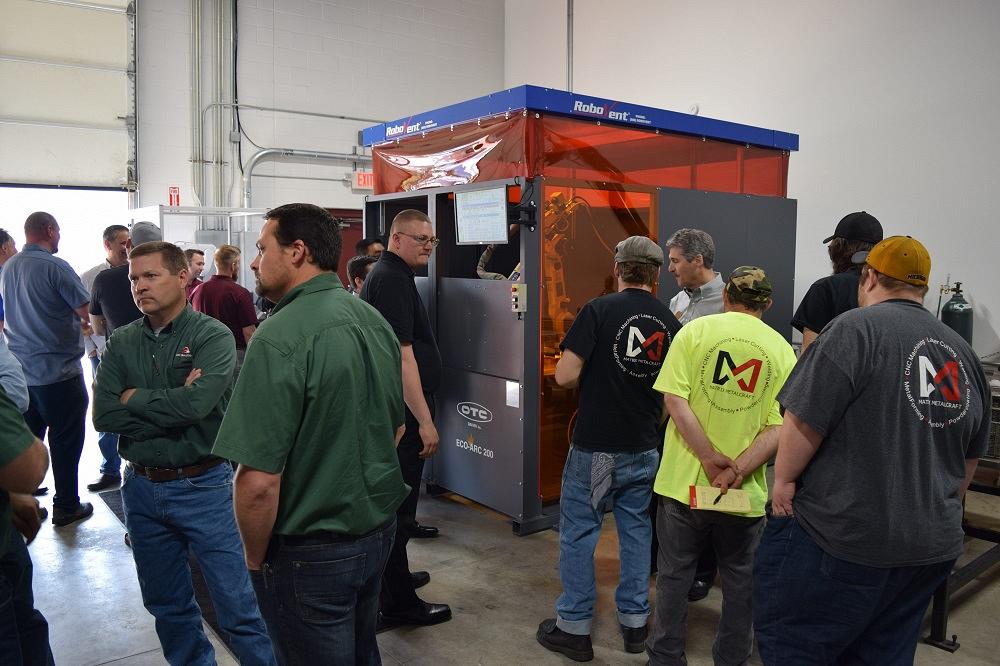- FMA
- The Fabricator
- FABTECH
- Canadian Metalworking
Daihen opens new tech centre
- May 18, 2018
- News Release
- Automation and Software
On May 16, Daihen Inc. celebrated the grand opening of its new Detroit Technical Center in Commerce Township, Mich. The new facility provides regional sales, applications, and service.
“The new facility is approximately three times the size of our former facility in Novi,” said Mike Monnin, general manager of Daihen Inc. “The extra space and additional services that will be provided from this facility will give us the ability to better serve our customers in the area.”
The grand opening included demonstrations of OTC Daihen’s manual and robotic welding technologies.
The manual welding area had a booth in which visitors could try their hand welding with the company’s Welbee P500L pulse/low-spatter power source on mild steel and the P400 pulse power source on aluminum. Both were equipped with the company’s intelligent torch, which is a torch with buttons and a display on it that allows welders to adjust all their controls without having to go to the power source.
Three welding robots were on show during the opening. One was a pre-engineered robotic welding production cell called the Eco-Arc 200, comprising an FD-V8 welding robot, a Welbee P500L power source, and Synchro-feed aluminum welding package. The robot demonstrated basic wire and arc additive manufacturing of aluminum.
“Synchro-feed is really the magic behind a couple of the demonstrations we have at the open house today,” said Monnin. “It’s a combination of a servotorch that’s controlled by the robot and a wire buffer that tells how much wire is being accumulated back into the system. It’s like a sewing machine action that does the welding. We draw the wire back to heat up the tip to get a droplet to form, and then we set the droplet down into the puddle while we turn off the current. Synchronizing all of these processes is what the encoder does. The example of additive manufacturing demonstrates the sort of result you get using this with aluminum – virtually no spatter and very controlled heat input, which is essential for this type of additive manufacturing.”
Monnin described the Eco-Arc concept as “my first robot” – a cell that can be installed as-is and moved around the shop on its base. It’s designed with two weld tables so that one can be loaded as the other is busy welding a part.
Another welding robot on show was the 7-axis FD-B4S. It was set up to demonstrate the Synchro-feed tackling galvanized steel. The robot itself, however, is distinctive for its central axis, which allows it to move more freely around an assembly.
“We have five models of this, from 4 kg up to 20 kg in both hollow and conventional wrist,” said Monnin. “The seventh axis is useful if you want to try to put multiple robots in a small space and they have to work around each other. In a job shop, it would allow you to have less complicated tooling because the part wouldn’t have to be tilted or moved as the robot could work around the part.”
The third welding robot on show was the FD-V8 equipped with a FD-QT laser camera seam tracker/finder.
“As the weld seam moves around or gets wider or narrower, the sensor adjusts position and weld process as necessary,” said Monnin. “Errorproof welding is what we’re aiming for. The camera is fully integrated with our FD-11 controller. I don’t pull out a PC to set this up; I pick up the teach pendant and it shows me an image of what the camera sees and I pick the points on the seam geometry that I want to translate into coordinates for the robot.”
subscribe now


Keep up to date with the latest news, events, and technology for all things metal from our pair of monthly magazines written specifically for Canadian manufacturers!
Start Your Free Subscription- Industry Events
MME Winnipeg
- April 30, 2024
- Winnipeg, ON Canada
CTMA Economic Uncertainty: Helping You Navigate Windsor Seminar
- April 30, 2024
- Windsor, ON Canada
CTMA Economic Uncertainty: Helping You Navigate Kitchener Seminar
- May 2, 2024
- Kitchener, ON Canada
Automate 2024
- May 6 - 9, 2024
- Chicago, IL
ANCA Open House
- May 7 - 8, 2024
- Wixom, MI





















